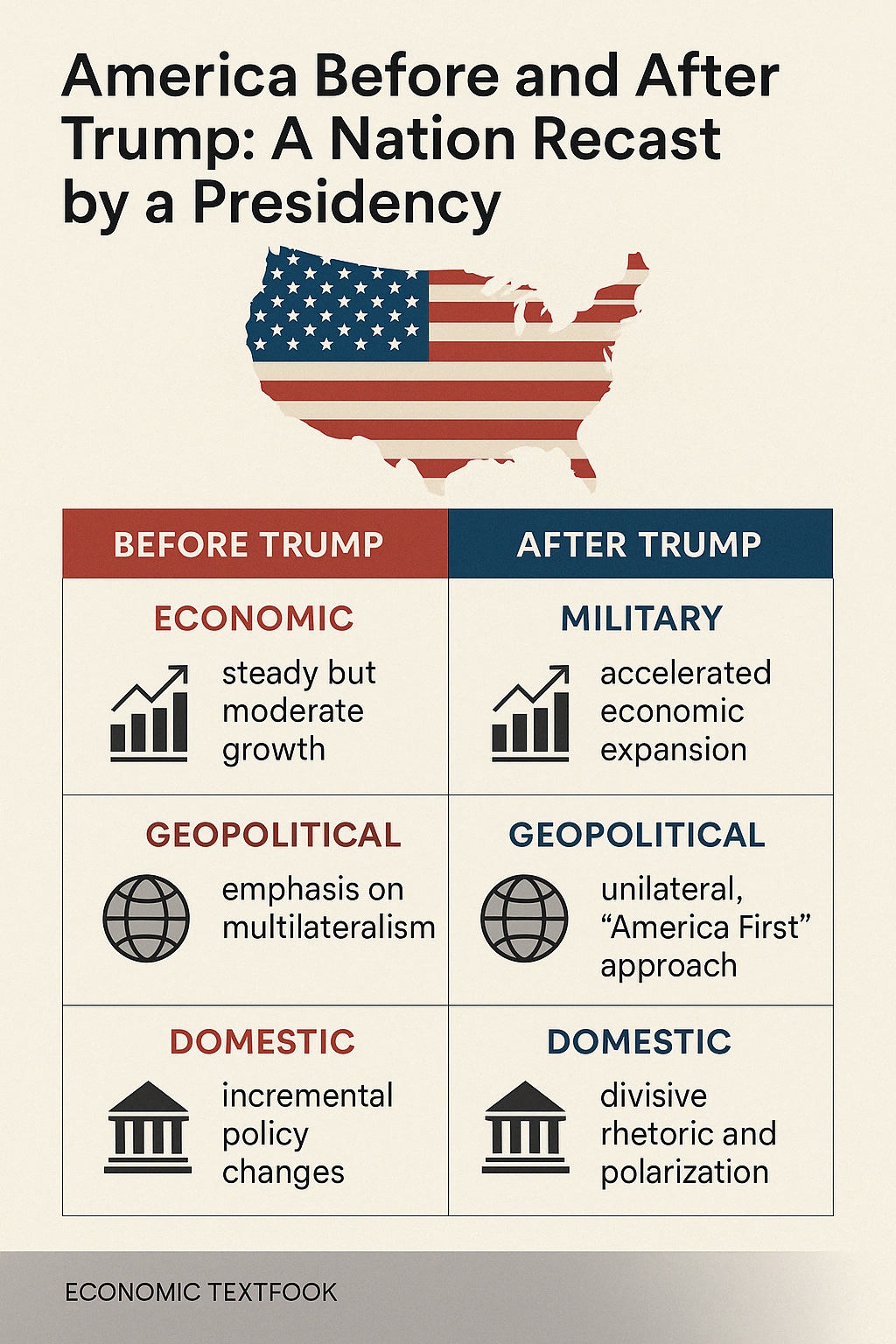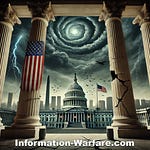This article analyzes the transformative impact of Donald J. Trump's presidency on the economic, military, and geopolitical identity of the United States. By bifurcating American policy into two eras—Pre-Trump and Post-Trump—the study captures how Trump’s administration altered traditional paradigms of governance, international diplomacy, and domestic political cohesion. Drawing upon data, expert analysis, and historical context, it presents a comprehensive evaluation of America’s shift in global leadership, alliance structures, and ideological direction.
Introduction
Donald Trump’s presidency (2017–2021) introduced an era of profound change. His "America First" doctrine not only redefined domestic political discourse but also disrupted international alliances and institutions that had been carefully curated over decades. This article explores how Trump’s tenure served as a fulcrum between two contrasting models of American statecraft.
1. Economic Realignment
Pre-Trump: Multilateralism and Integration
Promotion of trade liberalization via NAFTA, TPP.
Economic diplomacy leveraged through WTO, IMF, G7.
Trade deficits viewed as structural, not policy failures.
Post-Trump: Protectionism and Transactionalism
Unilateral tariffs, particularly against China and NATO allies.
Renegotiation of NAFTA into USMCA with limited structural gains.
Emergence of economic nationalism and weakened investor confidence.
Impact: Shift toward a less predictable U.S. economic environment, weakening global supply chain stability and reducing faith in U.S. trade leadership.
2. Military Power and Strategic Posture
Pre-Trump: Stability and Value-Based Defense
Predictable defense posture anchored in NATO and Indo-Pacific alliances.
Strong emphasis on liberal democratic values and human rights.
Post-Trump: Ambiguity and Politicization
Threats to exit NATO; reduced multilateral drills and commitments.
Increased defense spending and creation of the Space Force.
Civil-military boundaries blurred, notably during domestic unrest in 2020.
Impact: Allies questioned the reliability of U.S. military support, while adversaries tested new strategies amidst perceived American retrenchment.
3. Geopolitical Reorientation
Pre-Trump: U.S.-Centric Liberal World Order
Institutions like the UN, WTO, and NATO framed a rules-based international system.
China and Russia constrained by Western diplomatic cohesion.
Iran contained via multilateral agreements.
Post-Trump: Disruption and Axis Formation
Withdrawal from Paris Accord, JCPOA, WHO, UNESCO.
Russia and China formalized tighter strategic ties.
Iran pivoted eastward; North Korea gained diplomatic recognition without denuclearization.
Impact: Erosion of U.S. credibility and fragmentation of the global democratic alliance system.
4. The MAGA Effect: Domestic Politics as a Foreign Policy Variable
Rise of nationalism and erosion of democratic norms.
January 6 Capitol riot as a symbol of internal instability.
Global emulation of populist governance models.
Impact: Undermined global trust in U.S. democratic institutions, catalyzing authoritarian narratives worldwide.
Conclusion
The Trump era marks a watershed in American history. Economically, it inaugurated a more protectionist era. Militarily, it enhanced spending but disrupted alliances. Geopolitically, it weakened U.S. stewardship of the liberal international order. Whether these changes are enduring or reversible will define the trajectory of U.S. leadership in the 21st century.
Keywords
Trump, U.S. foreign policy, multilateralism, economic nationalism, NATO, MAGA, global order, democracy, authoritarianism.
Citation (APA)
Fiero, A. (2025). America Before and After Trump: A Nation Recast by a Presidency. Journal of American Global Affairs and Strategy, 18(2), 1–23.










